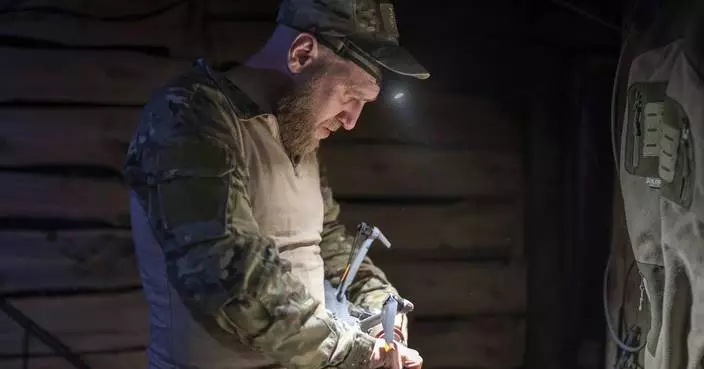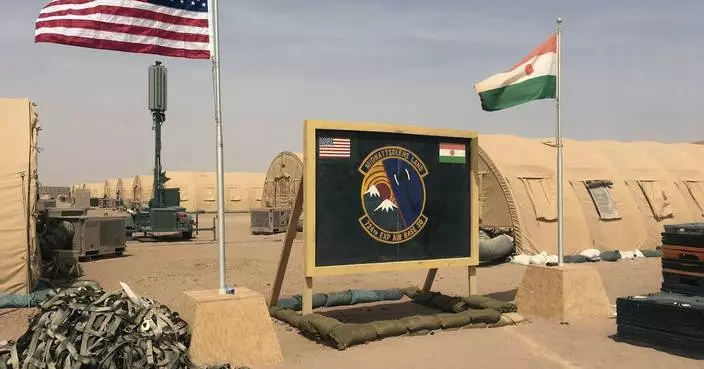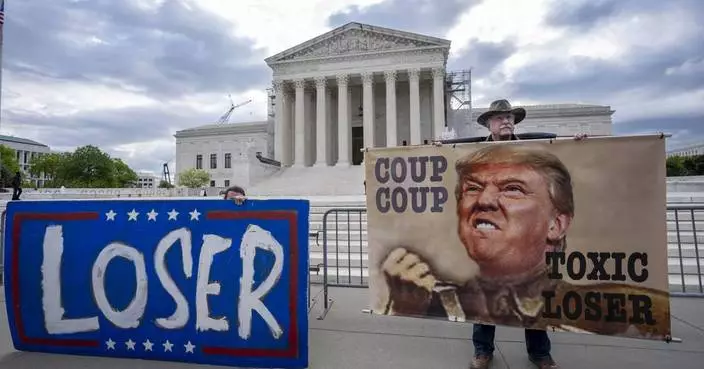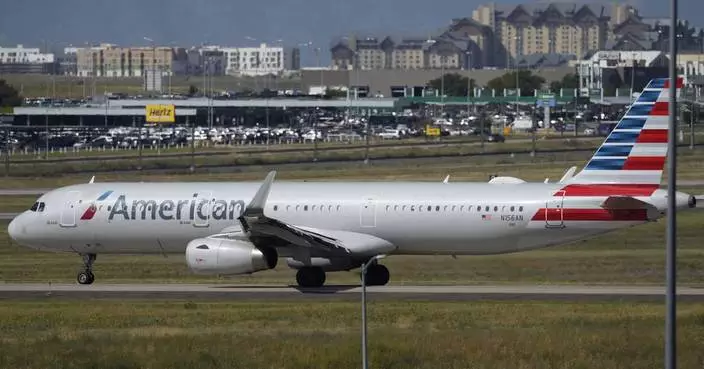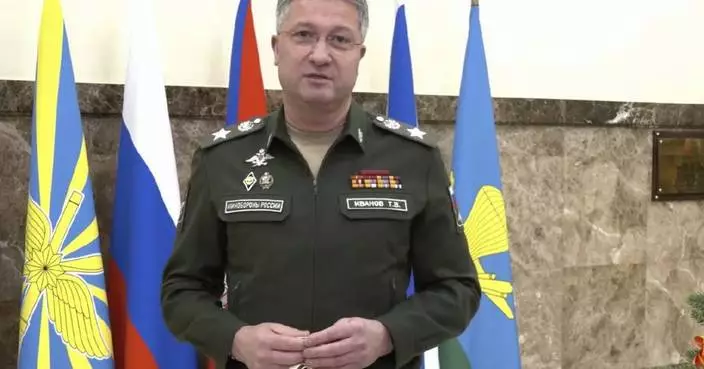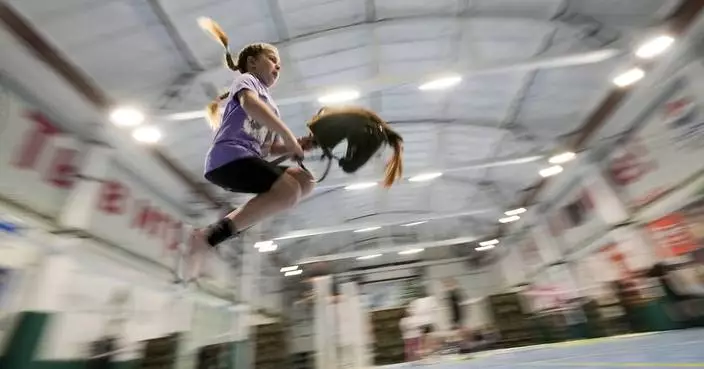Syria's long-running civil war may be winding down slowly, but the country is awash in weapons and a confounding array of local militias and thousands of foreign troops, some of which may never leave.
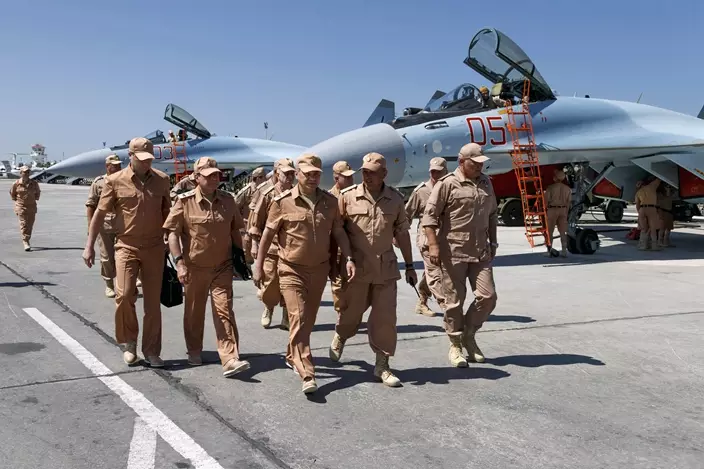
FILE - In this file photo taken on Saturday, June 18, 2016, Russian Defense Minister Sergei Shoigu, center, visits the Hemeimeem air base in Syria. (Vadim Savitsky/Russian Defense Ministry Press Service pool photo via AP, File)
With crucial aid from allies Iran and Russia, President Bashar Assad has regained control over large areas of Syria in advances that appear to have put to rest the possibility of a military overthrow, at least for now. But his rule is extremely reliant on continued assistance from Iranian-sponsored militias, which have spread across the war-ravaged country.
Click to Gallery
Syria's long-running civil war may be winding down slowly, but the country is awash in weapons and a confounding array of local militias and thousands of foreign troops, some of which may never leave.
With crucial aid from allies Iran and Russia, President Bashar Assad has regained control over large areas of Syria in advances that appear to have put to rest the possibility of a military overthrow, at least for now. But his rule is extremely reliant on continued assistance from Iranian-sponsored militias, which have spread across the war-ravaged country.
Some countries have already indicated that they plan to stay for the foreseeable future.
The end of the fight against IS takes away any legal justification for the presence of U.S. troops in Syria, but U.S. officials are now suggesting they plan to maintain a U.S. troop presence in the north until an overall settlement for the war is found. That has raised concern about a more permanent project that risks drawing the U.S. into a conflict with Syria and Assad's ally, Iran.
Earlier this month, the Syrian government called on the United States to withdraw its forces now that the fight against the Islamic State group is nearly over. The Foreign Ministry statement said the presence of U.S. troops will not force a political solution to the conflict.
Open-source materials — including video from the Hemeimeem air base, the main hub for the Russian military in Syria since its campaign began in September 2015 — indicate that Russia has several dozen jets and helicopter gunships there.
At the same time, he indicated Russia will maintain a presence at both the Hemeimeem air base and the navy supply facility in Tartus. Gerasimov added that the military's Reconciliation Center, a group of officers who have helped negotiate and maintain truces in Syria and coordinated the delivery of humanitarian aid, also will stay.
THE IRANIANS AND SPONSORED MILITIAS
Tens of thousands of Iranian-sponsored pro-government local militias known as the National Defense Forces are deployed across Syria, in addition to Iraqi Shiite militias and thousands of Iranian-backed Hezbollah fighters from Lebanon who have been key factors in turning the war in the government's favor. Hezbollah is deployed in wide areas along Syria's border with Lebanon, where the Shiite group has built military facilities and long-term bases it is unlikely to leave anytime soon.
The fight against the Islamic State group, which proliferated soon after the conflict began in 2011, has provided a convenient justification for foreign troops to be deployed in Syria with the pretext of fighting the extremists. Now that IS no longer holds any significant urban territory in Syria, the numbers of some forces may be scaled down, but foreign powers with longer-term ambitions and interests will try to maintain a presence in the country for years to come. That will further complicate prospects for a peace settlement.
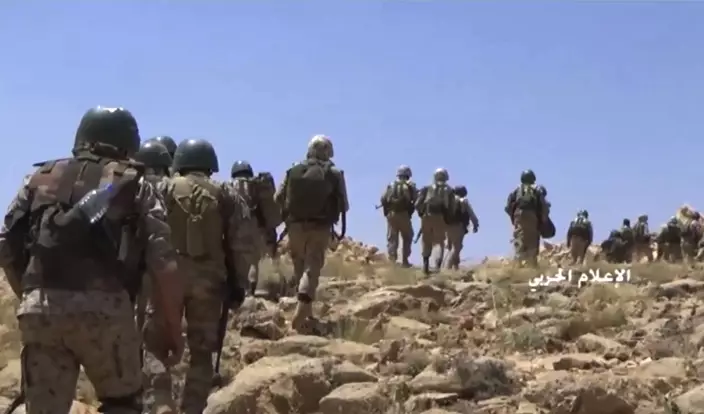
FILE - This file frame grab from video released on Saturday, July 22, 2017 and provided by the government-controlled Syrian Central Military Media, shows Hezbollah fighters advancing up a hill during clashes with al-Qaida-linked militants in an area on the Lebanon-Syria border. (Syrian Central Military Media, via AP, File)
Some countries have already indicated that they plan to stay for the foreseeable future.
THE AMERICANS
The presence of U.S. troops in northern Syria was initially meant to help train and support Kurdish-dominated local forces fighting the Islamic State group.
The number of troops has grown gradually. Although the official limit on U.S. troops has remained at 503 since shortly before President Barack Obama left office, the actual number is now believed to be more than 1,500, including special forces, a Marine artillery unit, forward air controllers and others. They are spread across more than a dozen bases in northern Syria.
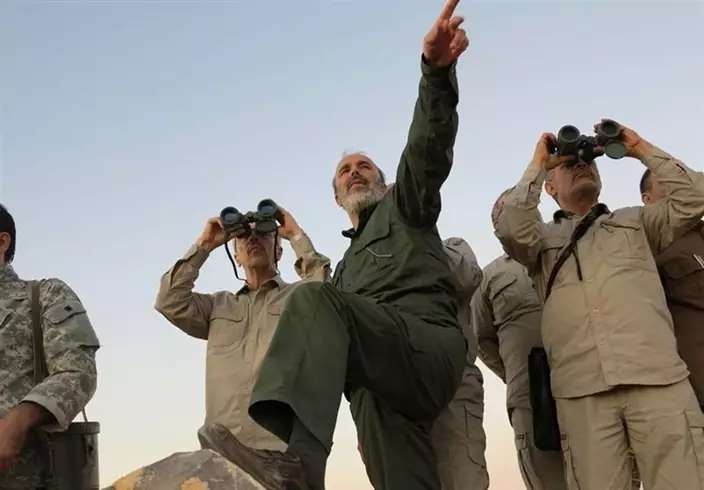
FILE - This file photo provided on Friday Oct. 20, 2017 by the government-controlled Syrian Central Military Media, shows Iran's army chief of staff Maj. Gen. Mohammad Bagheri, left, looks into binoculars as he visits and other senior officers from the Iranian military a front line in the northern province of Aleppo, Syria. (Syrian Central Military Media, via AP)
The end of the fight against IS takes away any legal justification for the presence of U.S. troops in Syria, but U.S. officials are now suggesting they plan to maintain a U.S. troop presence in the north until an overall settlement for the war is found. That has raised concern about a more permanent project that risks drawing the U.S. into a conflict with Syria and Assad's ally, Iran.
"We're not just going to walk away right now before the Geneva process has cracked," U.S. Secretary of Defense Jim Mattis said earlier this month, referring to the U.N.-backed political talks.
Kurdish officials have asked the U.S. to stay on, fearing that a quick withdrawal would facilitate Assad's forces swooping in on Kurdish-held territory in the north.
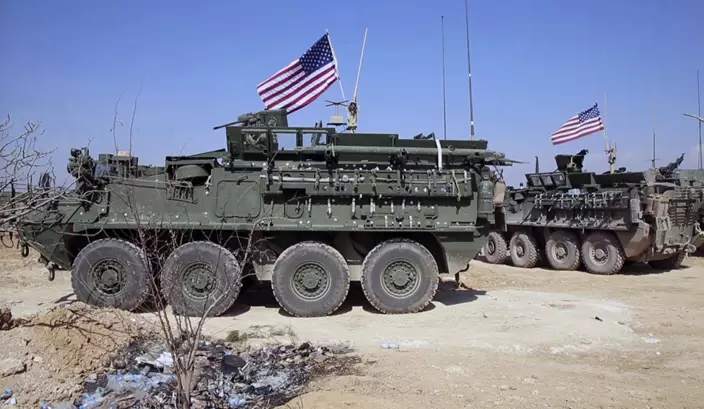
FILE - This Tuesday, March 7, 2017 file frame grab from video provided by Arab 24 network, shows U.S. forces take up positions on the outskirts of the Syrian town, Manbij, a flashpoint between Turkish troops and allied Syrian fighters and U.S.-backed Kurdish fighters, in al-Asaliyah village, Aleppo province, Syria. (Arab 24 network, via AP, File)
Earlier this month, the Syrian government called on the United States to withdraw its forces now that the fight against the Islamic State group is nearly over. The Foreign Ministry statement said the presence of U.S. troops will not force a political solution to the conflict.
THE RUSSIANS
Russia has never said how many of its military personnel, warplanes and other weapons are in Syria. Turnout figures in voting from abroad in the September 2016 parliamentary election indicated the number of Russian military personnel in Syria at the time was about 4,300. The Russian presence has likely increased, as Moscow this year deployed its military police to patrol so-called "de-escalation zones" in Syria.
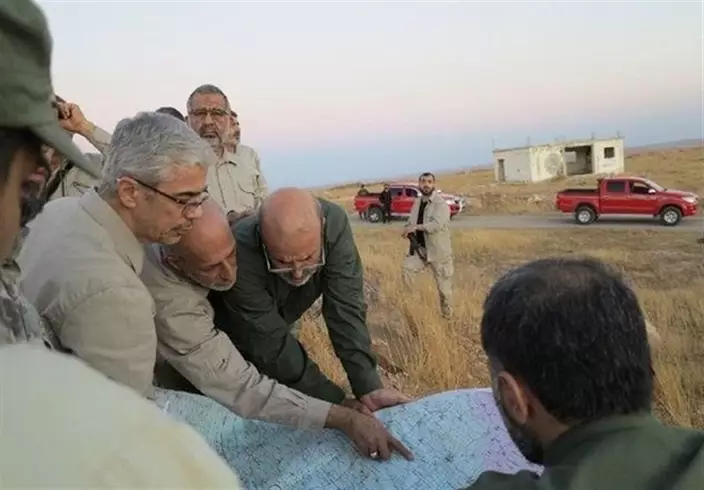
FILE - This file photo provided on Friday Oct. 20, 2017 by the government-controlled Syrian Central Military Media, shows Iran's army chief of staff Maj. Gen. (Syrian Central Military Media, via AP, File)
Open-source materials — including video from the Hemeimeem air base, the main hub for the Russian military in Syria since its campaign began in September 2015 — indicate that Russia has several dozen jets and helicopter gunships there.
Russia also has deployed special forces to conduct intelligence and coordinate airstrikes. Senior Russian military officers also have helped train and direct Syrian government troops. In recent months, Russian military police have become increasingly visible in Syria.
The chief of the Russian military general staff, Gen. Valery Gerasimov, said last week that Russia will "significantly" reduce its military foothold in Syria as the campaign nears its end.
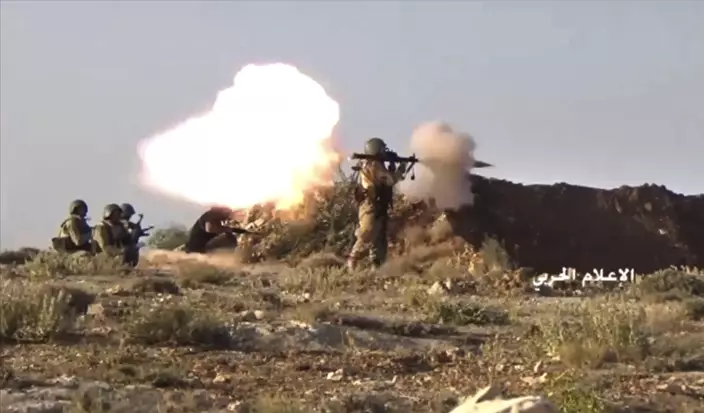
FILE - This file frame grab from video released on Saturday, July 22, 2017 and provided by the government-controlled Syrian Central Military Media, shows a Hezbollah fighter fires a rocket-propelled grenade (RPG) as other take position during clashes with al-Qaida-linked militants in an area on the Lebanon-Syria border. (Syrian Central Military Media, via AP, File)
At the same time, he indicated Russia will maintain a presence at both the Hemeimeem air base and the navy supply facility in Tartus. Gerasimov added that the military's Reconciliation Center, a group of officers who have helped negotiate and maintain truces in Syria and coordinated the delivery of humanitarian aid, also will stay.
Syria has allowed Russia to use Hemeimeem air base indefinitely without cost. Moscow also has signed a deal with Syria to use the Tartus base for 49 years, which could be extended if both parties agree.
The Russian military plans to modernize the air base to allow it to host more warplanes. It also intends to expand the Tartus facility significantly to make it a full-scale naval base capable of hosting warships, including cruiser-sized vessels.

FILE - In this Dec. 4, 2016 file photo, Russian soldiers stand next to an aid convoy in Aleppo, Syria. Syria's long-running civil war may be winding down, but even if the conflict ends, Syria is a changed country with a dizzying array of local militias and thousands of foreign troops, some of whom may never leave. (AP Photo/Hassan Ammar, File)
THE IRANIANS AND SPONSORED MILITIAS
Of all the foreign troops in Syria, perhaps none have been as widespread and potentially lasting as the Iranians. The Islamic Republic of Iran has made an enormous effort to keep Assad in power, providing extensive military and financial support throughout the six-year civil war.
It has deployed Islamic Revolutionary Guards in Syria as well as Iranian officers who provide military and political support. Iranian officials say more than 1,000 Iranian fighters have been killed in Syria and Iraq after they were deployed to defend Shiite holy shrines.
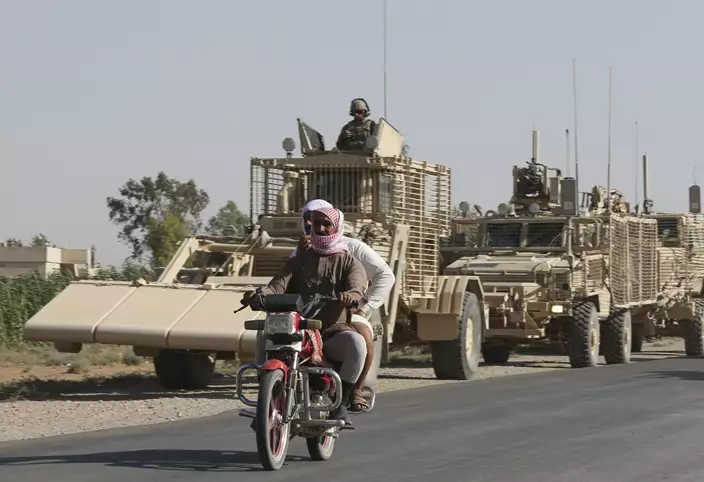
FILE - This Wednesday, July 26, 2017 file photo, Syrian citizens ride their motorcycle past U.S. armored vehicles, on a road that links to Raqqa city, northeast Syria. (AP Photo/Hussein Malla, File)
Tens of thousands of Iranian-sponsored pro-government local militias known as the National Defense Forces are deployed across Syria, in addition to Iraqi Shiite militias and thousands of Iranian-backed Hezbollah fighters from Lebanon who have been key factors in turning the war in the government's favor. Hezbollah is deployed in wide areas along Syria's border with Lebanon, where the Shiite group has built military facilities and long-term bases it is unlikely to leave anytime soon.
Iran's strategy aims to ensure it can continue to pursue its vital interests after the war, using parts of Syria as a base and making certain that a land corridor from Tehran to Beirut remains open.
THE TURKS
Turkey first sent ground forces into Syria last year in a campaign dubbed "Operation Euphrates Shield." It was aimed at fighting the Islamic State group, although Turkey also seeks, above all, to limit the expansion of Syria's Kurds along its border with Syria. Ankara perceives the Syrian Kurdish fighters to be an extension of the Kurdish insurgents who have waged a three- decade insurgency in Turkey.
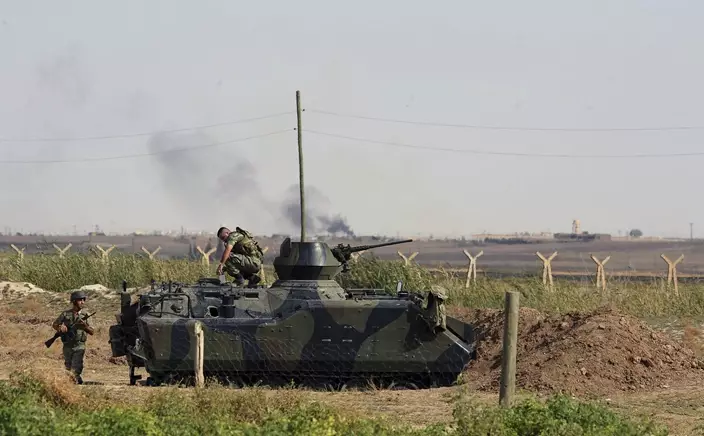
FILE - This Friday, Oct. 5, 2012 file photo, Turkish military take up positions on the Turkish side of the border near Syrian rebel-controlled town of Tel Abyad, in Akcakale, Turkey. (AP Photo, File)
Turkish officials have not disclosed how many Turkish soldiers are deployed in Syria but security experts estimate that at least 2,500 troops are stationed in a swath of territory revolving around the towns of al-Rai, al-Bab and Jarablus — a border zone that Turkey and Turkey-backed rebels took back from IS last year under "Euphrates Shield."
An estimated 400 more Turkish troops are in the Idlib region as part of an agreement reached among Turkey, Russia and Iran to create a "de-escalation zone" in the area.
Turkey is building schools and hospitals in areas liberated under "Euphrates Shield" to encourage the return of refugees, and it was unclear how long the Turkish troops would stay in the zone.
President Recep Tayyip Erdogan has suggested that the Turkish troops could target a Syrian Kurdish group that Turkey considers to be a security threat in the Afrin region, north of Idlib, once the "de-escalation" mission is over.
AUGUSTA, Maine (AP) — An Army reservist and friend of the gunman behind Maine’s deadliest mass shooting testified Thursday about his friend's mental decline, describing publicly for the first time the warning he issued a month before the tragedy unfolded.
Sean Hodgson texted leaders of his reserve unit six weeks before the shooting that left 18 people dead and 13 wounded, telling them to change the passcode to the gate at their Army Reserve training facility and arm themselves if Robert Card showed up.
Hodgson told a panel investigating the mass shooting on Thursday that he issued the warning to superiors after Card’s delusional and violent behavior spiraled and ended with Card punching him in the face.
“I said ‘Just so you know, I love you. I’ll always be there for you. I won’t give up on you.’ He had that blank stare on his face. It was a dead stare and he drove away,” Hodgson recounted as his friend left him at a gas station.
The attacks happened six months ago on Oct. 25 when Card opened fire at a bowling alley and a bar in Lewiston, two locations where he held a delusional belief that people were talking about him behind his back. Two days later, the 40-year-old Reservist was found dead of a self-inflicted gunshot wound.
Hodgson told superiors on Sept. 15: “I believe he’s going to snap and do a mass shooting.”
But it wasn't just Hodgson who was worried about Card. Several other reservists witnessed his deterioration during training last summer. That led to a two-week hospitalization in July for Card, months after relatives warned police he had grown paranoid and that they were concerned about his access to guns.
The failure of authorities to remove Card’s weapons in the weeks before the shooting has become the subject of a monthslong investigation in the state, which also has passed new gun safety laws since the tragedy.
In an interim report released last month, an independent commission launched by Gov. Janet Mills concluded that the Sagadahoc County sheriff’s office had probable cause under Maine’s “yellow flag” law to take Card into custody and seize his guns. It also criticized police for not following up with Hodgson about his warning text. A final report is expected this summer.
On Thursday, Hodgson said he warned of a mass shooting because Card threatened multiple members of the unit with violence and that his threats and delusions were escalating. And he had access to guns.
“The way he was behaving was very threatening. It was escalating. The totality of the circumstances, the events leading to that moment, I was pretty convinced he was going to cause harm,” he said.
Another reservist, Daryl Reed, testified he witnessed Card’s mental and physical decline firsthand, seeing a “normal guy” who successfully traded stocks and loved hunting and the outdoors become increasingly paranoid and believing others were calling him a pedophile.
Card also acquired a thermal scope with a laser range finder that he said cost $10,000, and he demonstrated how it could be used to detect animals, including at night, Reed said.
He added fellow reservists started to become concerned Card could become a danger to colleagues. They were surprised, several testified, when Card was released from a psychiatric hospital after only two weeks.
In an exclusive series of interviews in January, Hodgson told The Associated Press he met Card in the Army Reserve in 2006 and that they became close friends after both divorced their spouses around the same time. They lived together for about a month in 2022, and when Card was hospitalized in New York in July, Hodgson drove him back to Maine.
Growing increasingly worried about his friend’s mental health, Hodgson warned authorities after Card started “flipping out” after a night of gambling, pounding the steering wheel and nearly crashing multiple times. After ignoring his pleas to pull over, Card punched him in the face, Hodgson said.
“It took me a lot to report somebody I love,” he said. “But when the hair starts standing up on the back of your neck, you have to listen.”
Some officials downplayed Hodgson’s warning, suggesting he might have been drunk because of the late hour of his text. Army Reserve Capt. Jeremy Reamer, the commanding officer of the reserve unit, described him as “not the most credible of our soldiers” and said his message should be taken “with a grain of salt.”
Hodgson said he struggles with post-traumatic stress disorder and alcohol addiction but said he wasn’t drinking that night and was awake because he works nights and was waiting for his boss to call. “I grieve every day for the many lives that are lost for no reason and those that are still affected today,” he told the AP earlier this month.
Cara Cookson, director of victim services for the Maine Office of the Attorney General, also testified Thursday and described through tears the daunting task of responding to the enormity of the tragedy with a “patchwork of resources.”
On Thursday evening, the Maine Resiliency Center, which provides support to people affected by the killings, held a six-month commemoration event that drew several hundred people to a park in Lewiston.
The names of the 18 people who died were read aloud at the start of the ceremony, and there were 18 empty chairs, each with a candle and a blue heart, honoring the victims.
The governor also acknowledged the anniversary. “Our hearts are still healing, and the road to healing is long, but we will continue to walk it together,” Mills said in a statement.
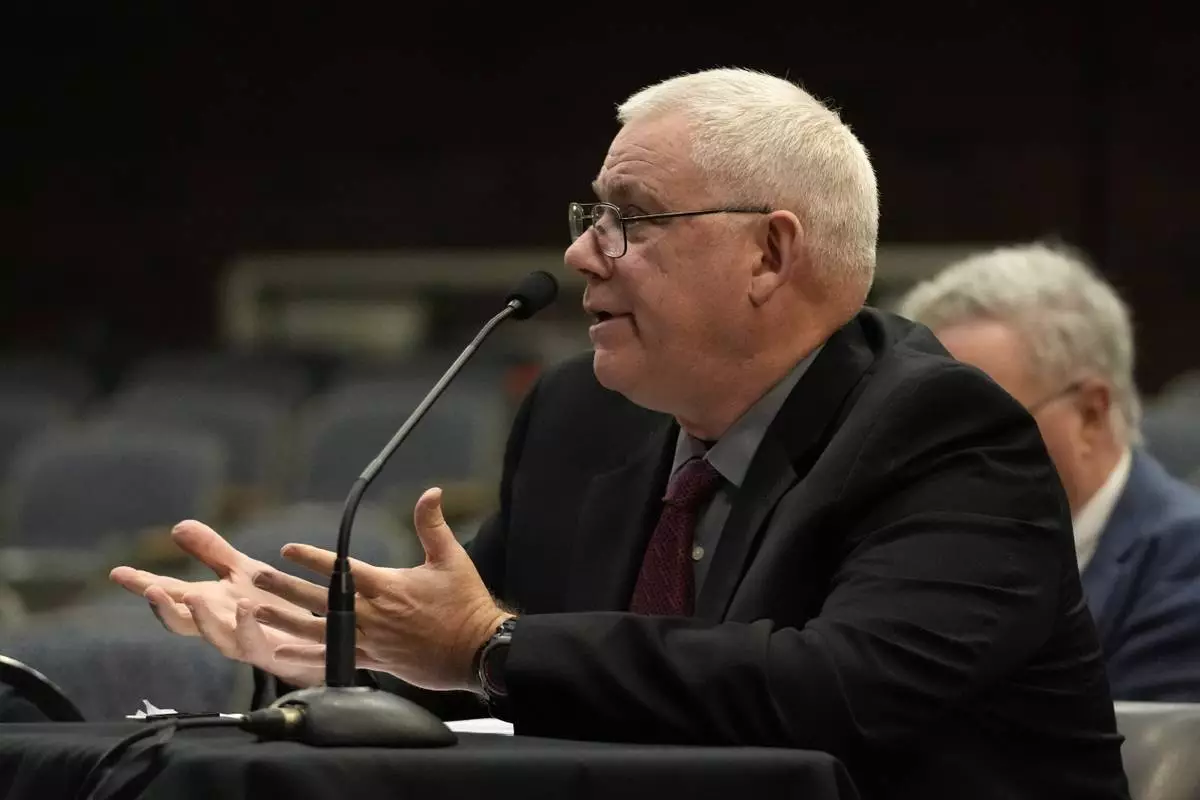
Ed Yurek, a member of the U.S. Army Reserve, gives testimony, Thursday, April 25, 2024, in Augusta, Maine, during a hearing of the independent commission investigating the law enforcement response to the mass shooting in Lewiston, Maine. (AP Photo/Robert F. Bukaty)
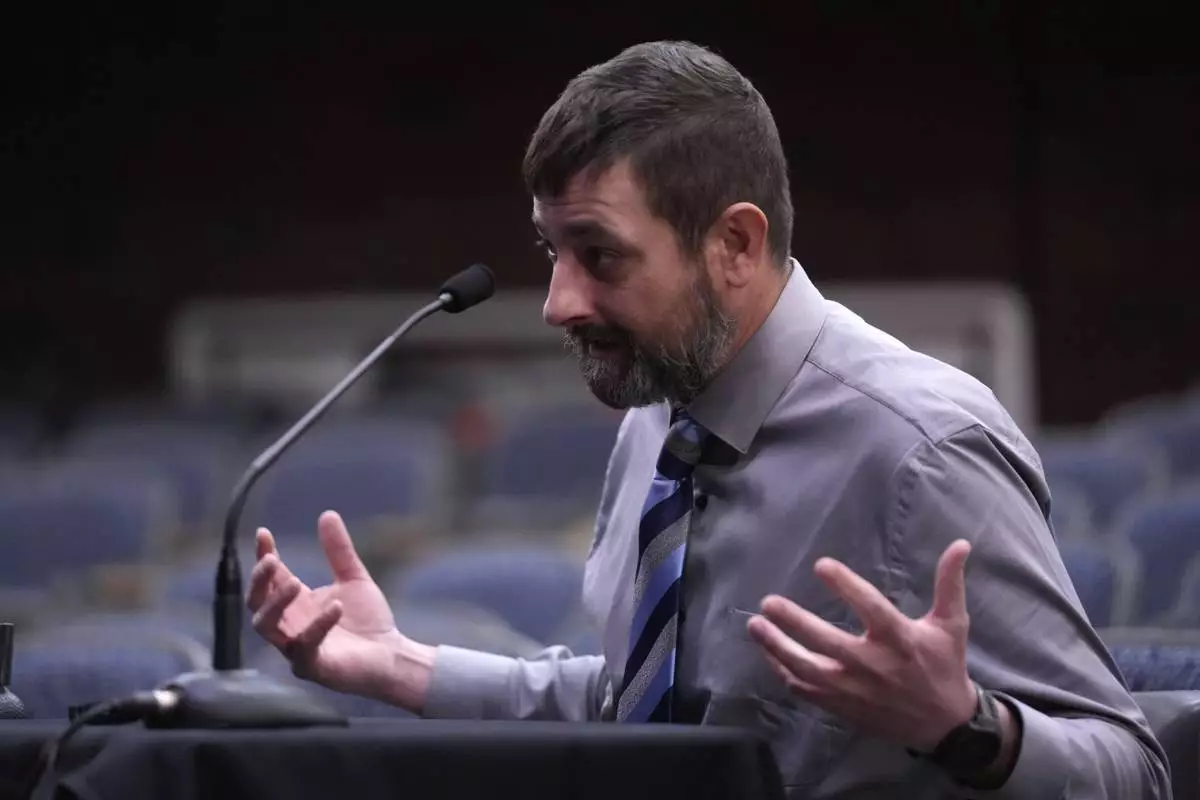
Sean Hodgson, a member of the U.S. Army Reserve, gives testimony, Thursday, April 25, 2024, in Augusta, Maine, during a hearing of the independent commission investigating the law enforcement response to the mass shooting in Lewiston, Maine. (AP Photo/Robert F. Bukaty)
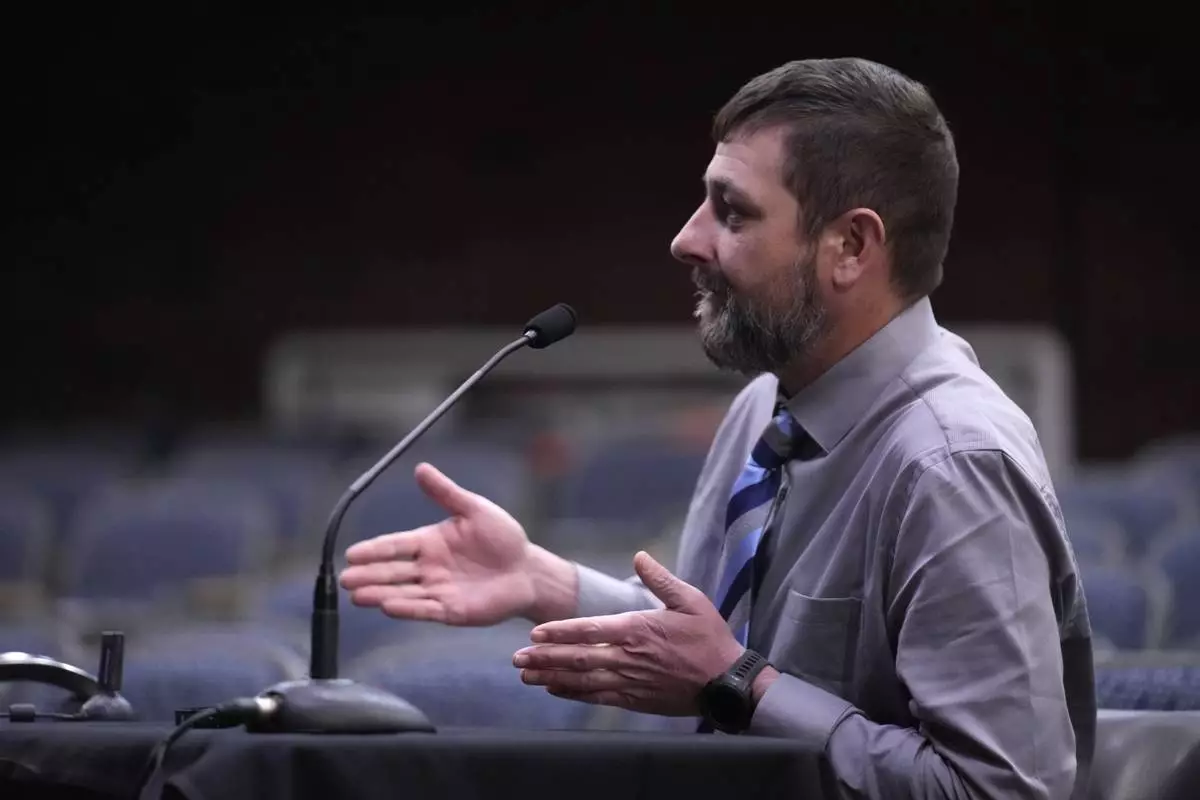
Sean Hodgson, a member of the U.S. Army Reserve, gives testimony, Thursday, April 25, 2024, in Augusta, Maine, during a hearing of the independent commission investigating the law enforcement response to the mass shooting in Lewiston, Maine. (AP Photo/Robert F. Bukaty)
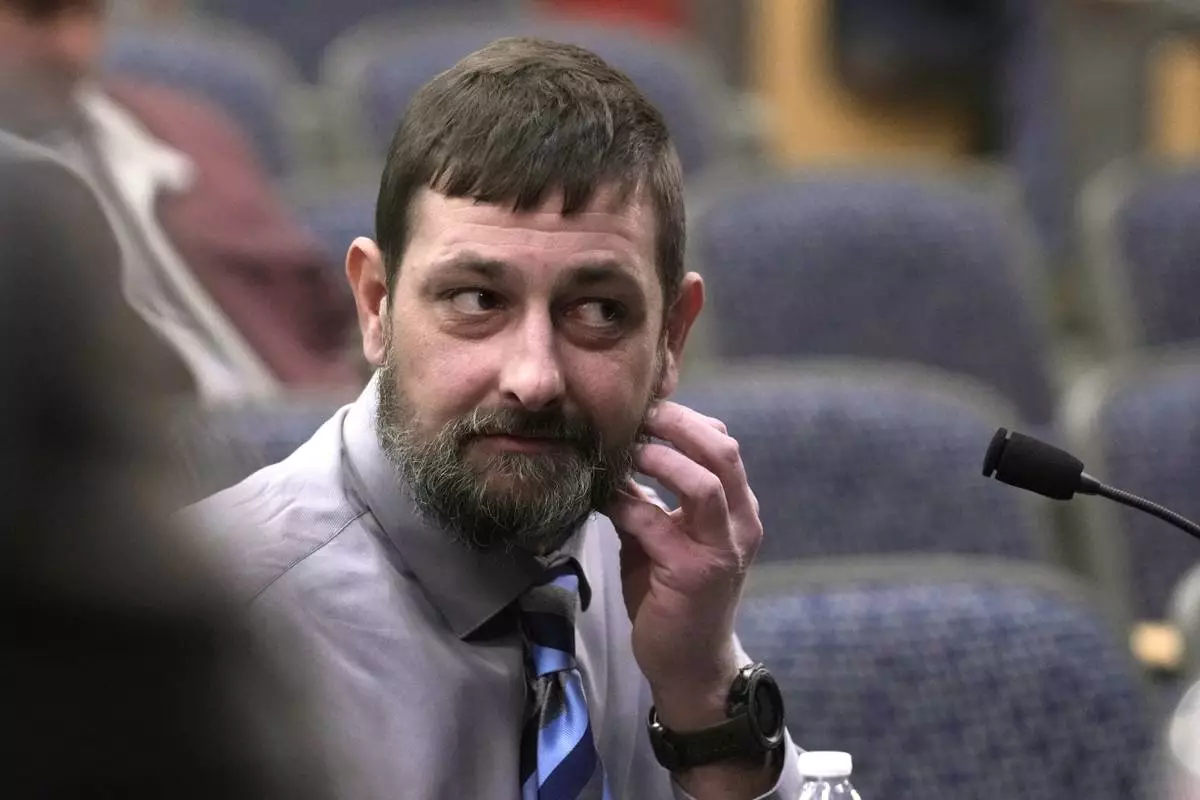
Sean Hodgson, a member of the U.S. Army Reserve, shows where he was punched by Robert Card while giving testimony, Thursday, April 25, 2024, in Augusta, Maine, during a hearing of the independent commission investigating the law enforcement response to the mass shooting in Lewiston, Maine. (AP Photo/Robert F. Bukaty)

Daniel Wathen listens to testimony, Thursday, April 25, 2024, in Augusta, Maine, during a hearing of the independent commission investigating the law enforcement response to the mass shooting in Lewiston, Maine. (AP Photo/Robert F. Bukaty)
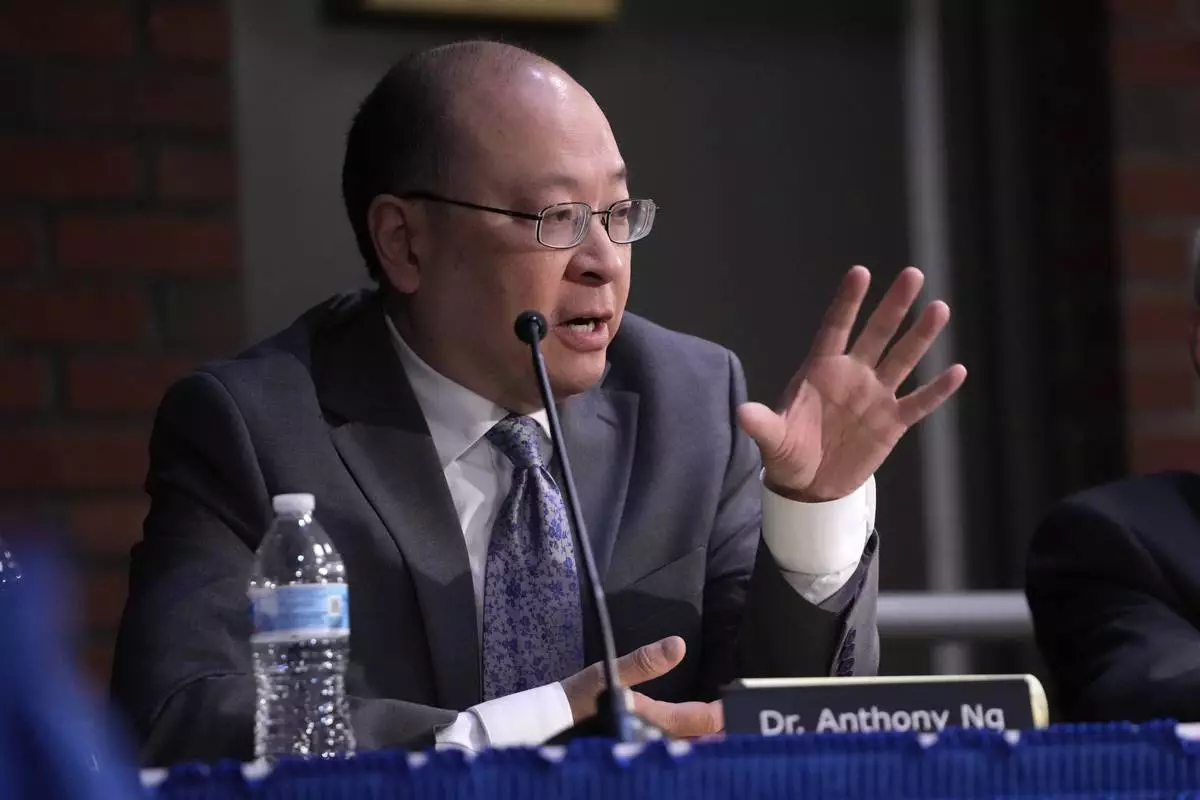
Dr. Anthony Ng questions a witness, Thursday, April 25, 2024, in Augusta, Maine, during a hearing of the independent commission investigating the law enforcement response to the mass shooting in Lewiston, Maine. (AP Photo/Robert F. Bukaty)
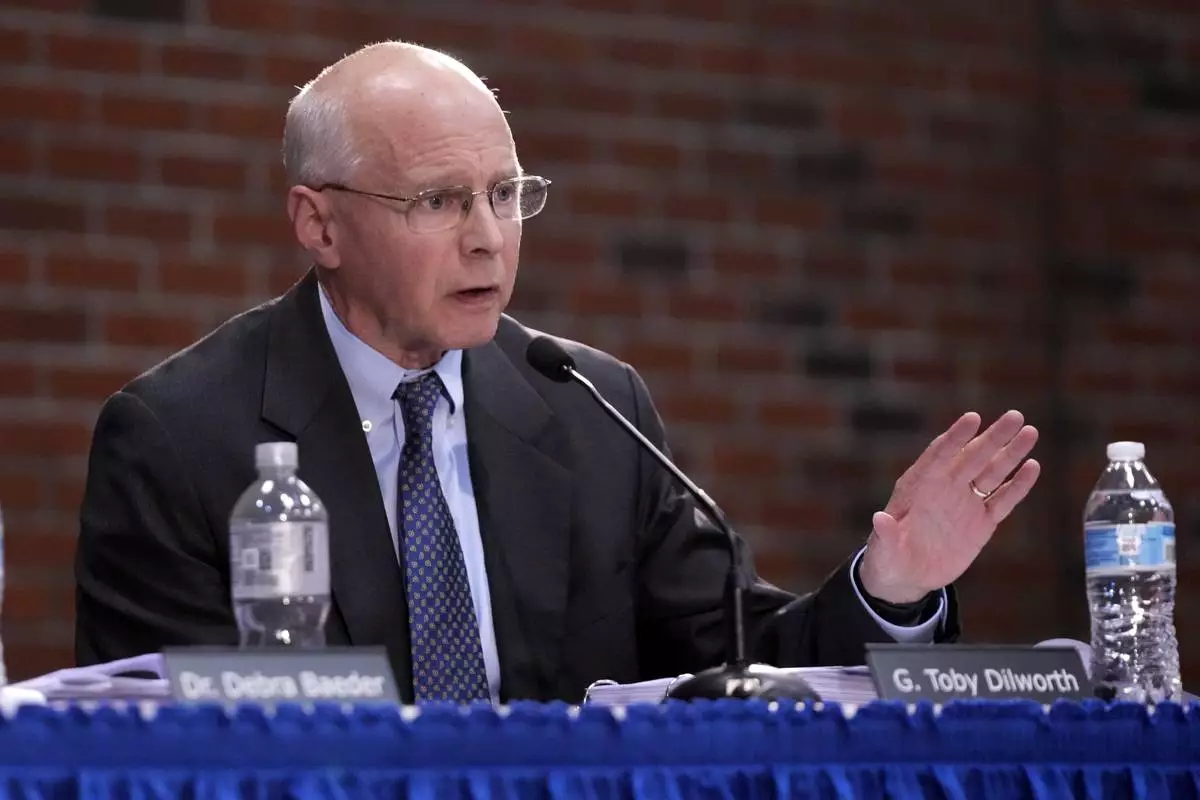
Toby Dilworth questions a witness, Thursday, April 25, 2024, in Augusta, Maine, during a hearing of the independent commission investigating the law enforcement response to the mass shooting in Lewiston, Maine. (AP Photo/Robert F. Bukaty)
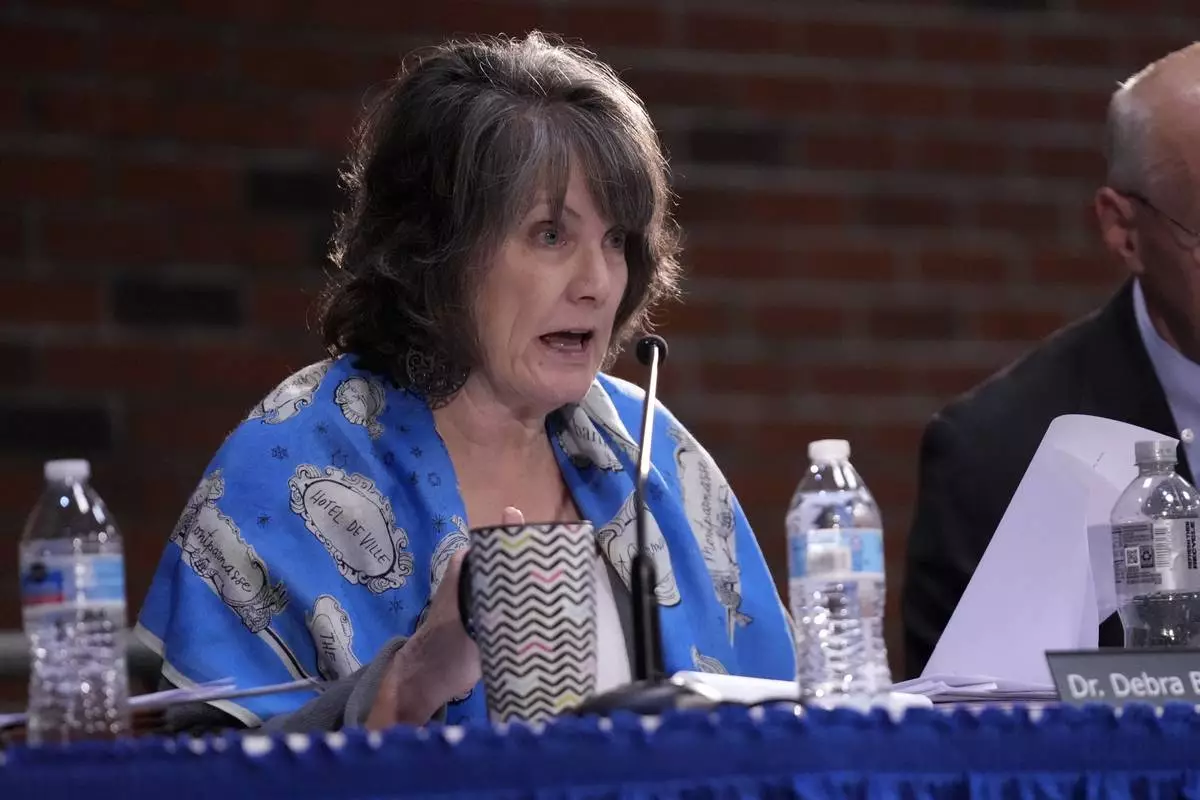
Dr. Debra Baeder questions a witness, Thursday, April 25, 2024, in Augusta, Maine, during a hearing of the independent commission investigating the law enforcement response to the mass shooting in Lewiston, Maine. (AP Photo/Robert F. Bukaty)

Ellen Gorman questions a witness, Thursday, April 25, 2024, in Augusta, Maine, during a hearing of the independent commission investigating the law enforcement response to the mass shooting in Lewiston, Maine. (AP Photo/Robert F. Bukaty)
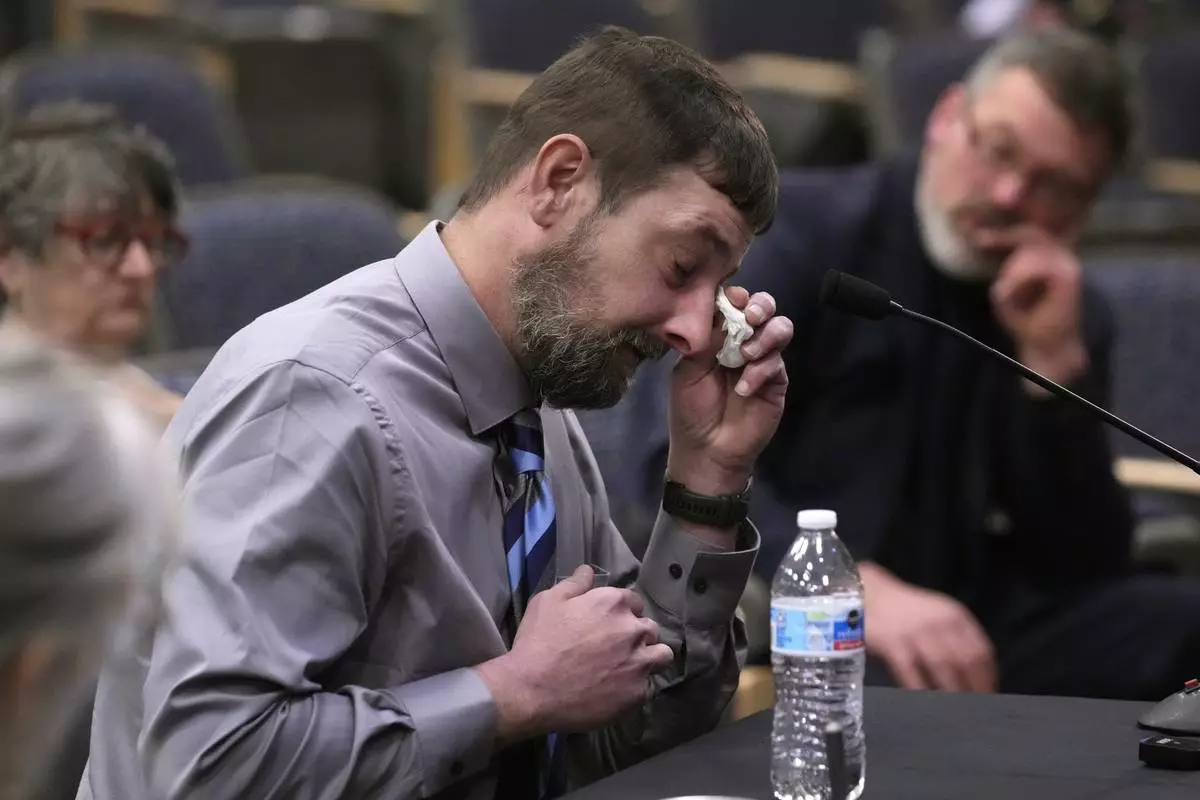
Sean Hodgson, a member of the U.S. Army Reserve, wipes tears while recalling the moment he heard about the mass shooting, Thursday, April 25, 2024, in Augusta, Maine, during a hearing of the independent commission investigating the law enforcement response to the mass shooting in Lewiston, Maine. (AP Photo/Robert F. Bukaty)
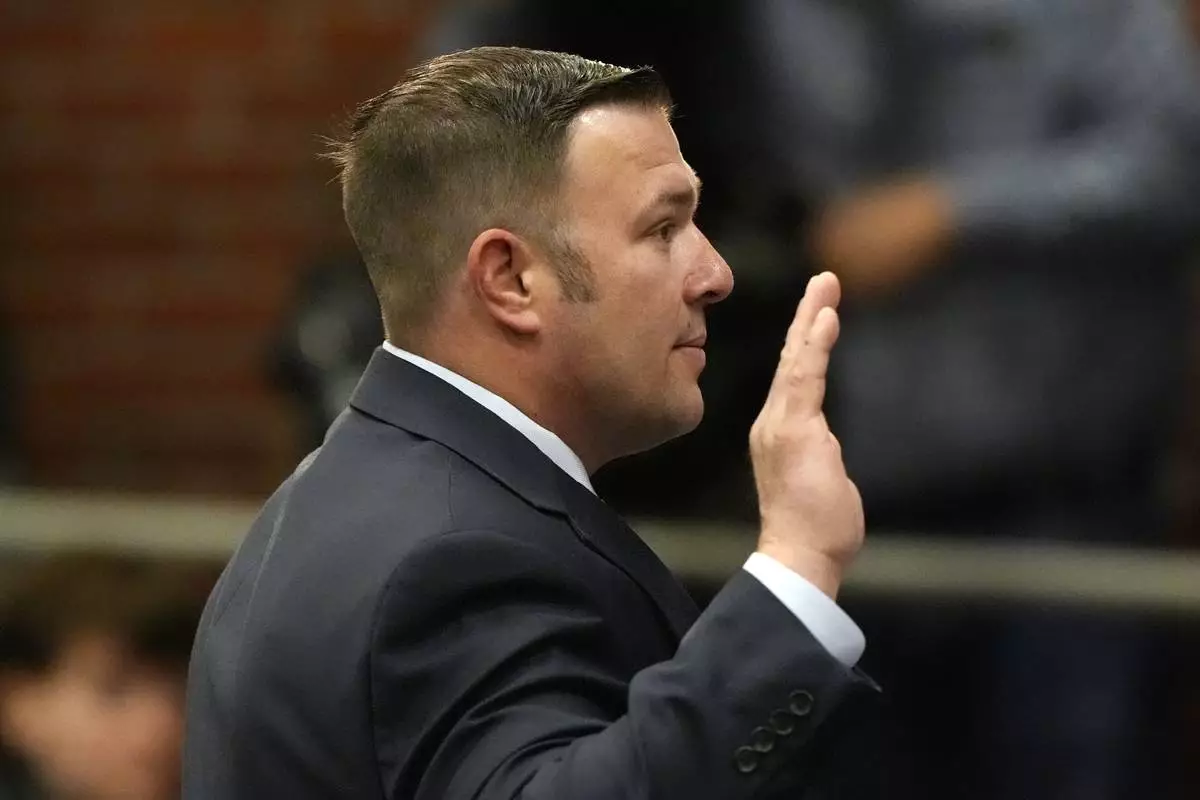
Daryl Reed, a member of the U.S. Army Reserves, is sworn in before giving testimony Thursday, April 25, 2024, in Augusta, Maine, during a hearing of the independent commission investigating the law enforcement response to the mass shooting in Lewiston, Maine. (AP Photo/Robert F. Bukaty)
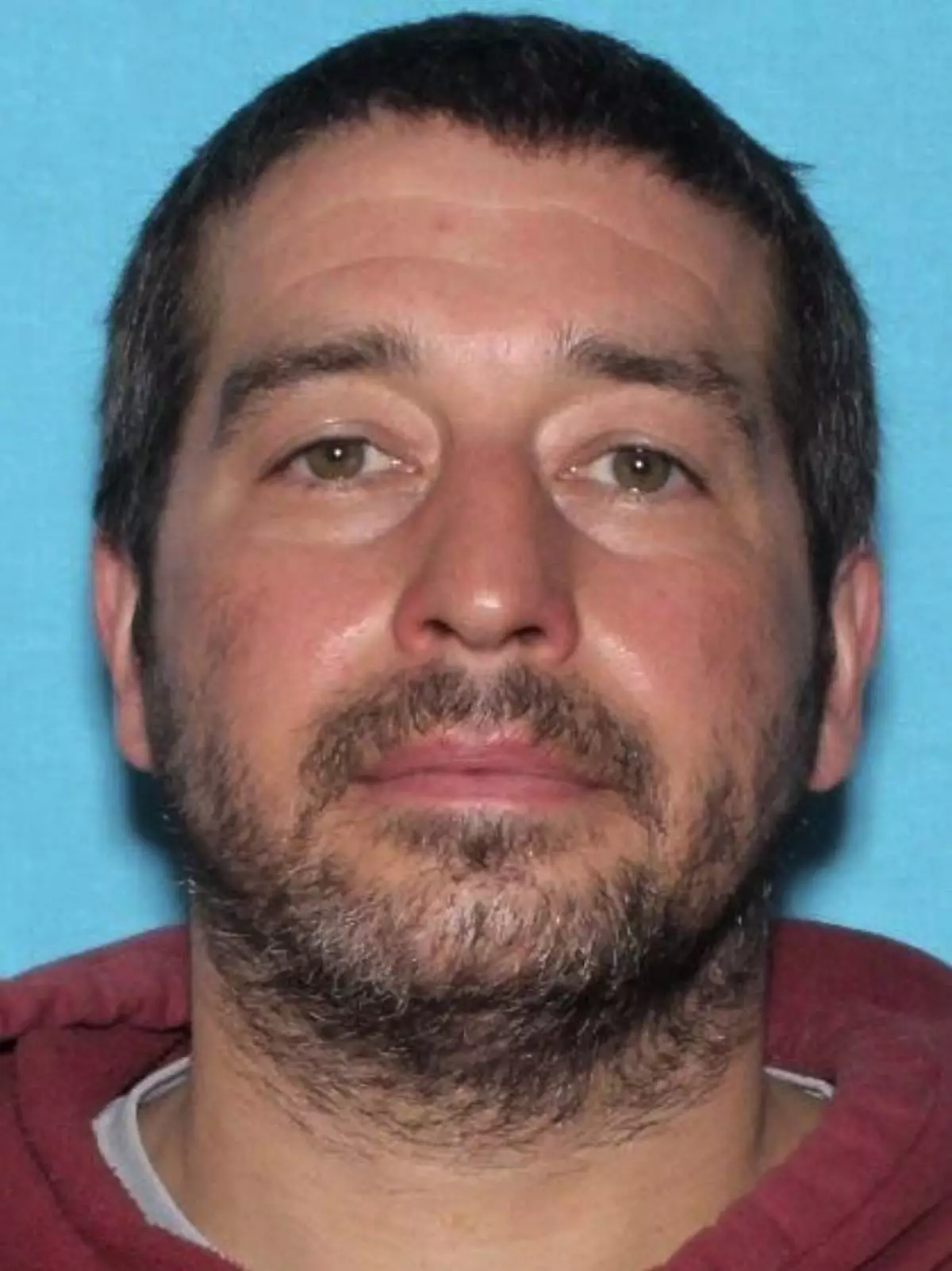
FILE - This photo released by the Lewiston, Maine, Police Department shows Robert Card, who was responsible for the mass shootings in Lewiston, Maine, on Oct. 25, 2023. Sean Hodgson, a fellow U.S. Army reservist who sounded the clearest warning ahead of Maine’s deadliest mass shooting, is expected to answer questions Thursday, April 25, 2024, from the commission investigating the tragedy. (Lewiston Police Department via AP, File)
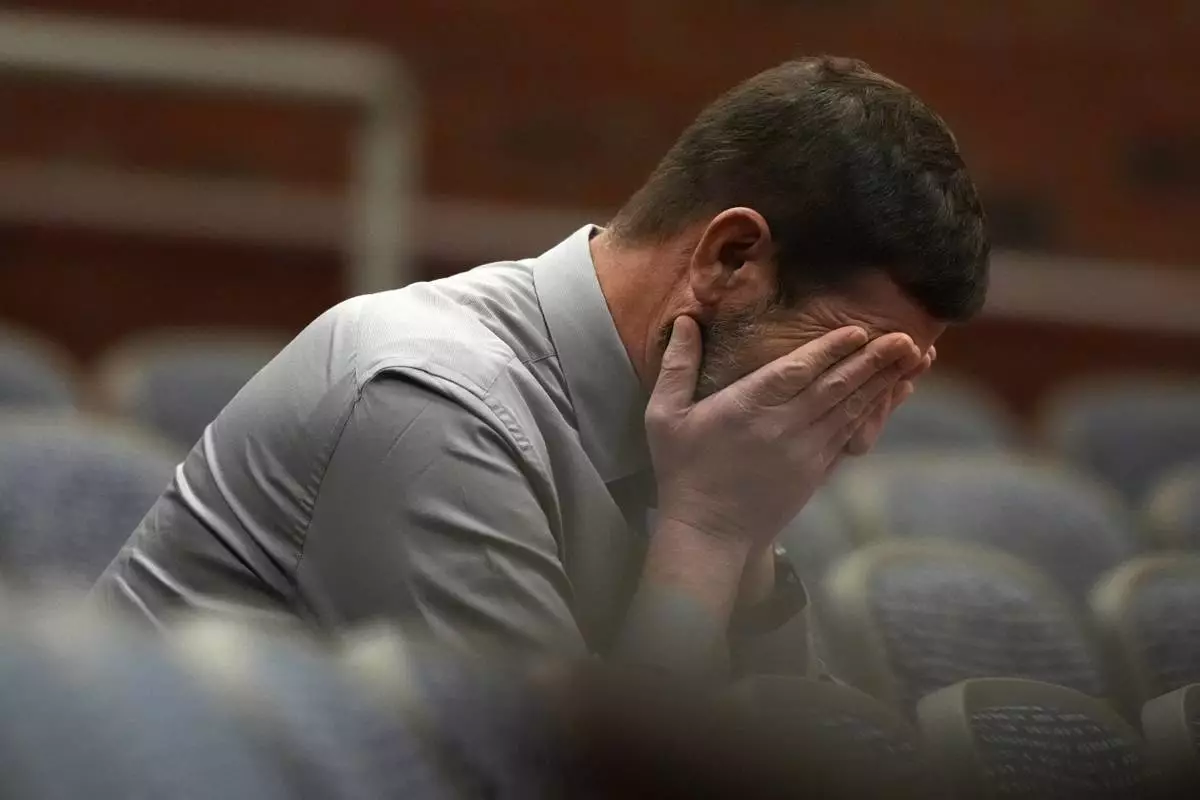
Sean Hodgson waits to be called to give testimony, Thursday, April 25, 2024, in Augusta, Maine, during a hearing of the independent commission investigating the law enforcement response to the mass shooting in Lewiston, Maine. Hodgson had alerted an Army supervisor in September that his friend, Robert Card, was capable to doing a mass shooting. (AP Photo/Robert F. Bukaty)

























